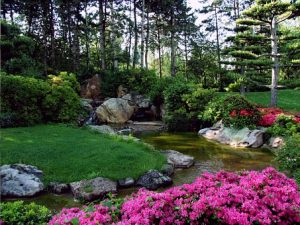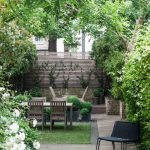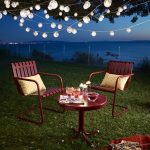 The addition of a Japanese garden to your front yard may enhance the salability of your home. An intriguing front yard of any type adds ambiance to a property. If a prospective buyer is drawn to your yard, perhaps he may be intrigued enough to view your home.
The addition of a Japanese garden to your front yard may enhance the salability of your home. An intriguing front yard of any type adds ambiance to a property. If a prospective buyer is drawn to your yard, perhaps he may be intrigued enough to view your home.
At this time of the year, the Japanese front yard stands out as one of the most eye-catching; it is because it does not need flowers to enhance it. Its charm is there regardless of plants; Japanese gardens follow Zen philosophies and are not difficult to reproduce in North America. They will lend themselves to any climate and any variation of plant.
Creating a Zen garden may even bring you some Zen contentment as a side effect! In “Your Own Japanese Garden: Part 1”, the concept of assembling your own garden was discussed with particular attention to its ambiance, focal points, rocks and lanterns.
In this section – “Your Own Japanese Garden: Part 2”, the plants, water, bridges, vessels and aging aspect are all explored. Plants in the winter can be fairly non-existent but your Japanese garden will still look good, because it has an intriguing design that does not rely on blooms.
Snowdrops and a Japanese flowering cherry may be your first blooms in the spring. If these are unavailable to buy in your climate, use a local tree, shrub or cactus.
For a tall backdrop near a fence there is a flowering Japanese daisy that does well in cool climates. It is most commonly seen in white or pink. If you really love your blooms, then spread them around as you wish!
Pansies lend themselves well to the Japanese garden and also honeysuckle (plant it near your seating area to enjoy the scent). Lilies and gladiolus also blend in with the look, and if you have a pond, add water lilies.
One of the plants that somehow looks Japanese is the begonia; they come in miniature or regular, and their colors are vivid. If you live in an area where not many flowers will bloom, try sticking to one color; consider buying every flower in white to keep to the simple idea.
If you buy evergreens, remember that you can choose from yellow, gray-green and blue-green as well as the traditional green. The red-leafed bush is also a colorful addition, and good ‘filler’. If you live in the desert, choose from the exotic collection of unique plants available to you there. Play more with the rock and ornamental pathway idea of laying out your garden.
Many people have put in their own pond; pond liners are inexpensive and instructions for the novice are easy to find on the Internet or in books.
A pond does not need a pump and can be small or large. However, some people prefer the use of a pump to allow the water to cascade over carefully placed rocks, etc.
A pond is a small area of Zen ‘nothingness’ where nothing else resides; water is also seen as the symbol for cleansing and purification. The sound of running water is said to soothe the soul, and have a de-stressing effect on the mind. However, if taking on a pond that complex is rather daunting (and stressful!) – there are other options.
Some of the self contained portable fountains where the water circulates within its own container can be found in bamboo styles. This would satisfy the need for the sound of running water; you may have to use an extension lead to operate it.
A truly Japanese focal point, and one that the Zen design ideally calls for, is a small bridge. This is to take you from one world to another; specifically from the troubled world in which we live into the soothing world of your Zen garden. Bridges can be ordered from the Internet, but you have to put them together yourself. Or maybe a local carpenter will create one for you?
If you buy a long shaped pond liner, you can place your bridge at one end of it and just plant tall bamboos or reeds on the far side of the bridge. This will suggest that your pond is bigger than it is and that the water runs under the bridge and past it.
To protect children and to keep your garden safe, install a stainless steel grid a few inches under the water level to ‘catch’ falling children.
Empty vessels and containers in stone, wood or terra cotta or another natural medium are appropriate in the Zen garden. The idea started with cracked teapots from Japanese tea ceremonies that the monks thought were too pretty to throw away. It has escalated into pots and empty vessels, and in some ways, the idea that the pot is old and was once useful ties in with the Japanese need for the reverence of age.
Venerability is highly regarded and in Zen gardens this need for maturity or dignity is represented by old, gnarled tree trunks, the patina on old stone, weathered wood or silvery gray driftwood. Old stone with moss nearby and growing over the top of the stone is a well known feature.
Maybe you can find your own moss by going for a country walk and lifting moss by sliding a knife underneath it. Keep it damp on the way home and try to cultivate it in your own garden. With one or more of these representations of aging, your garden is allowing the element of time to be revered.
Once you have created the true Zen garden, it will have ‘shibui’: there is no real translation, but a restrained and simple elegance comes close to describing it. It should also help you to resonate with stillness as it will emanate ‘seijaku’ – peace and calm.
More DIY Home Decor Ideas and Resources


